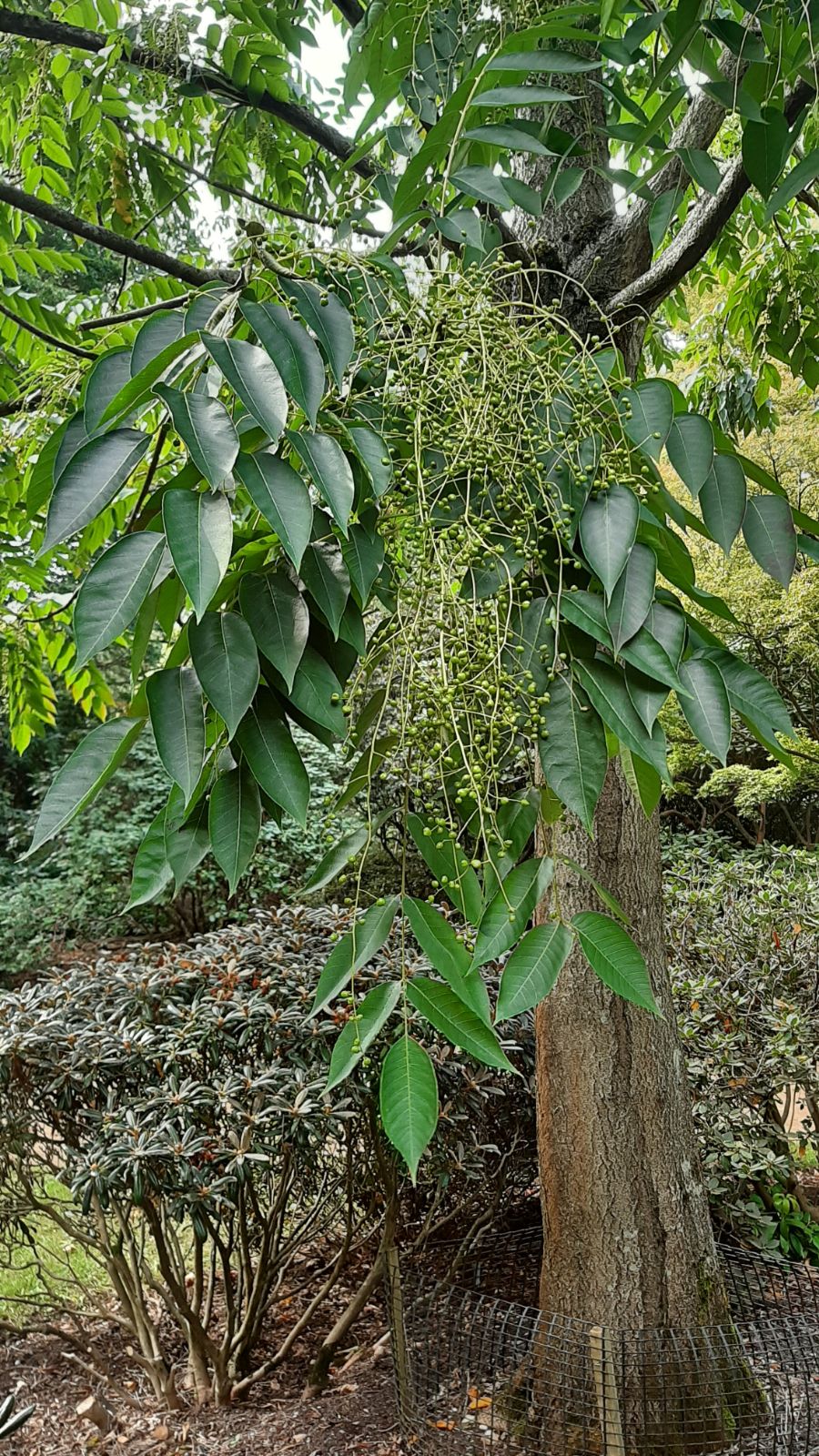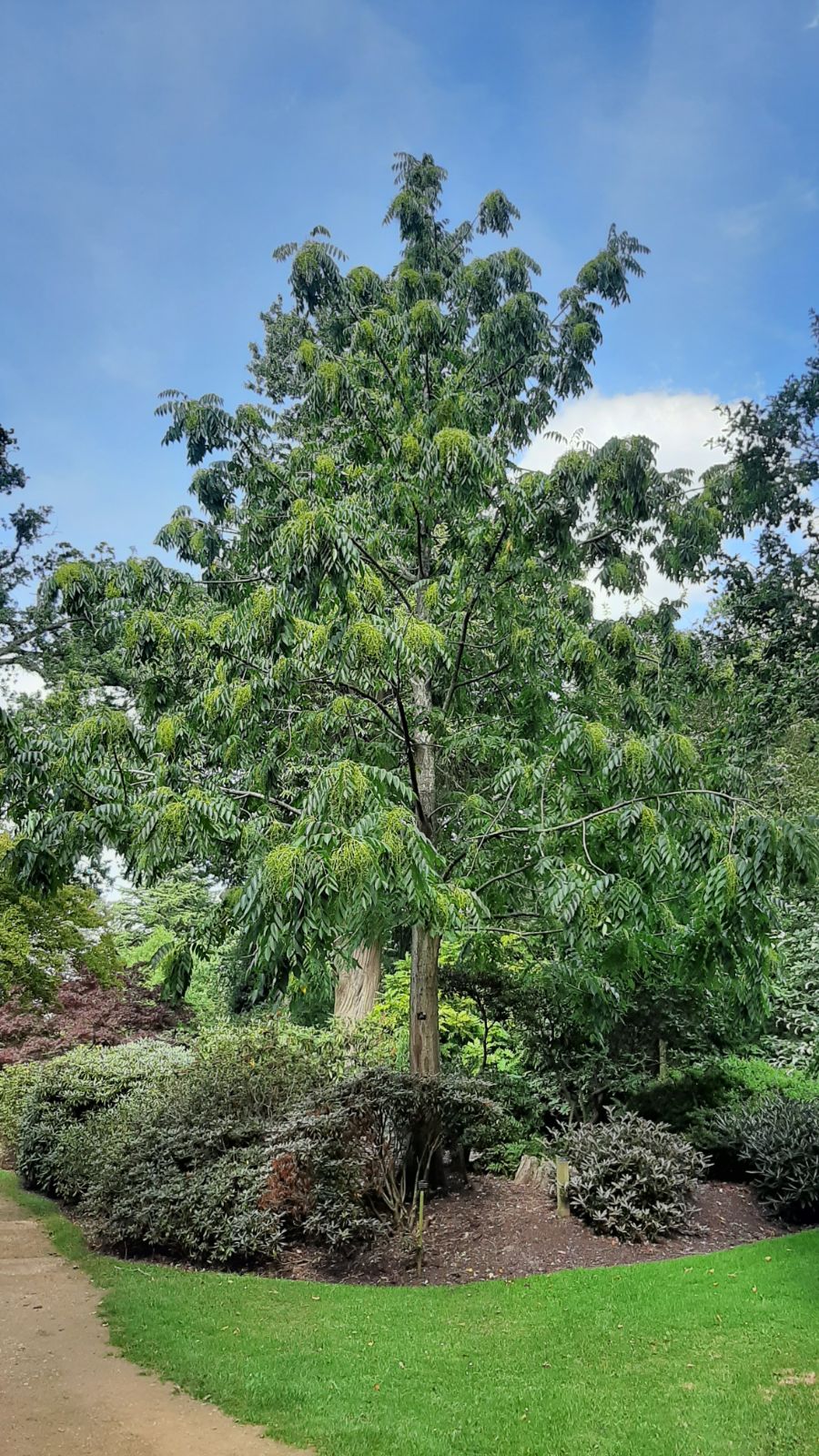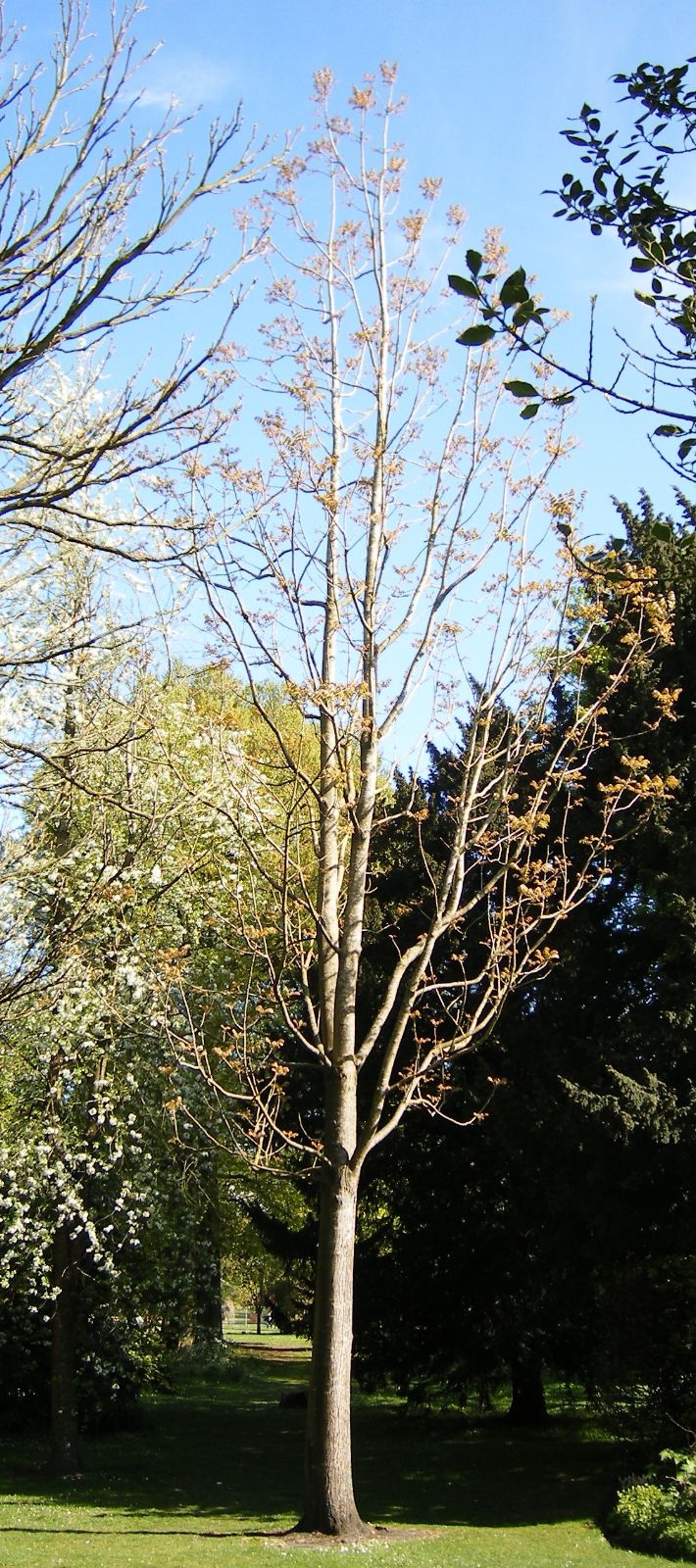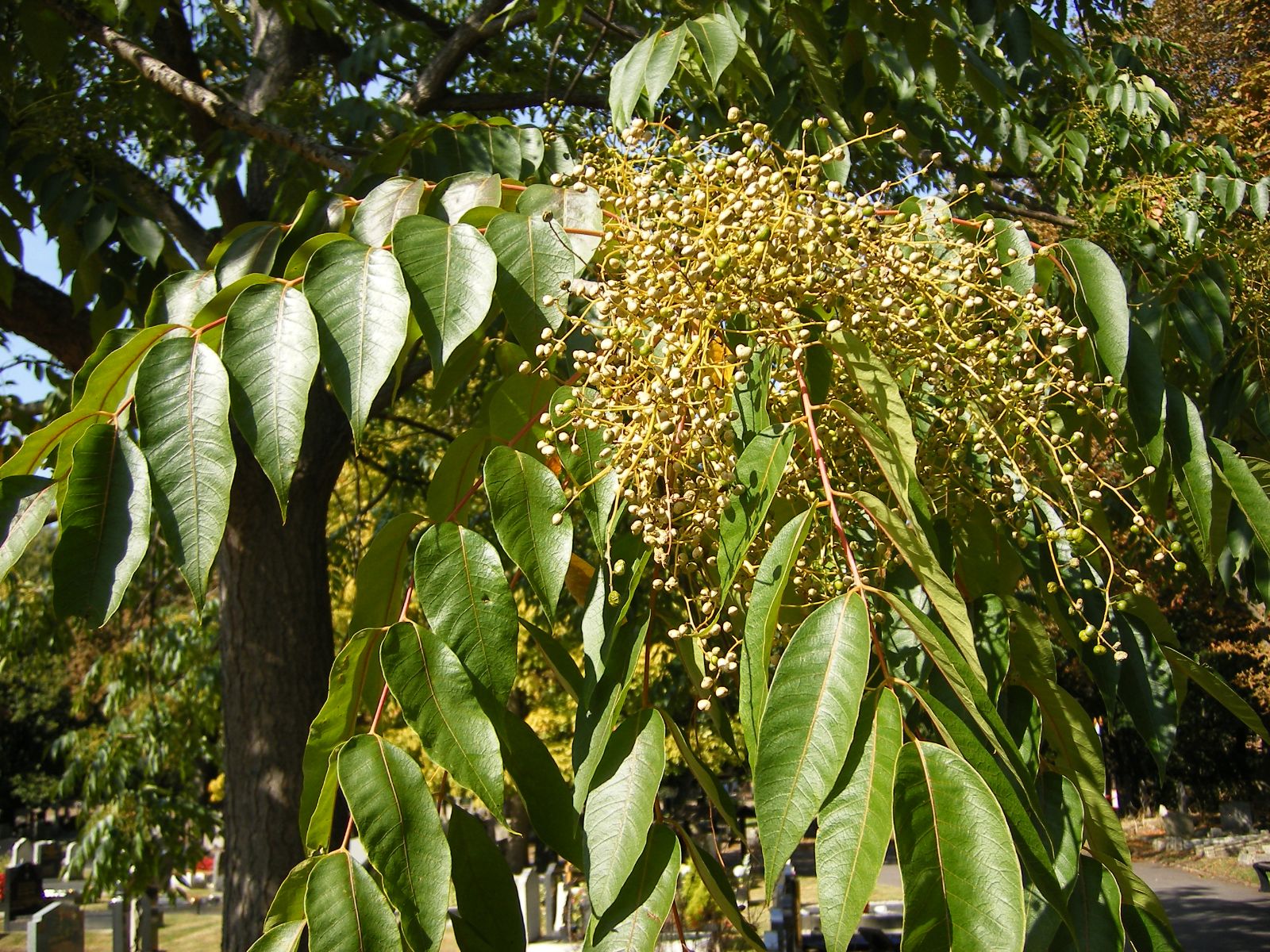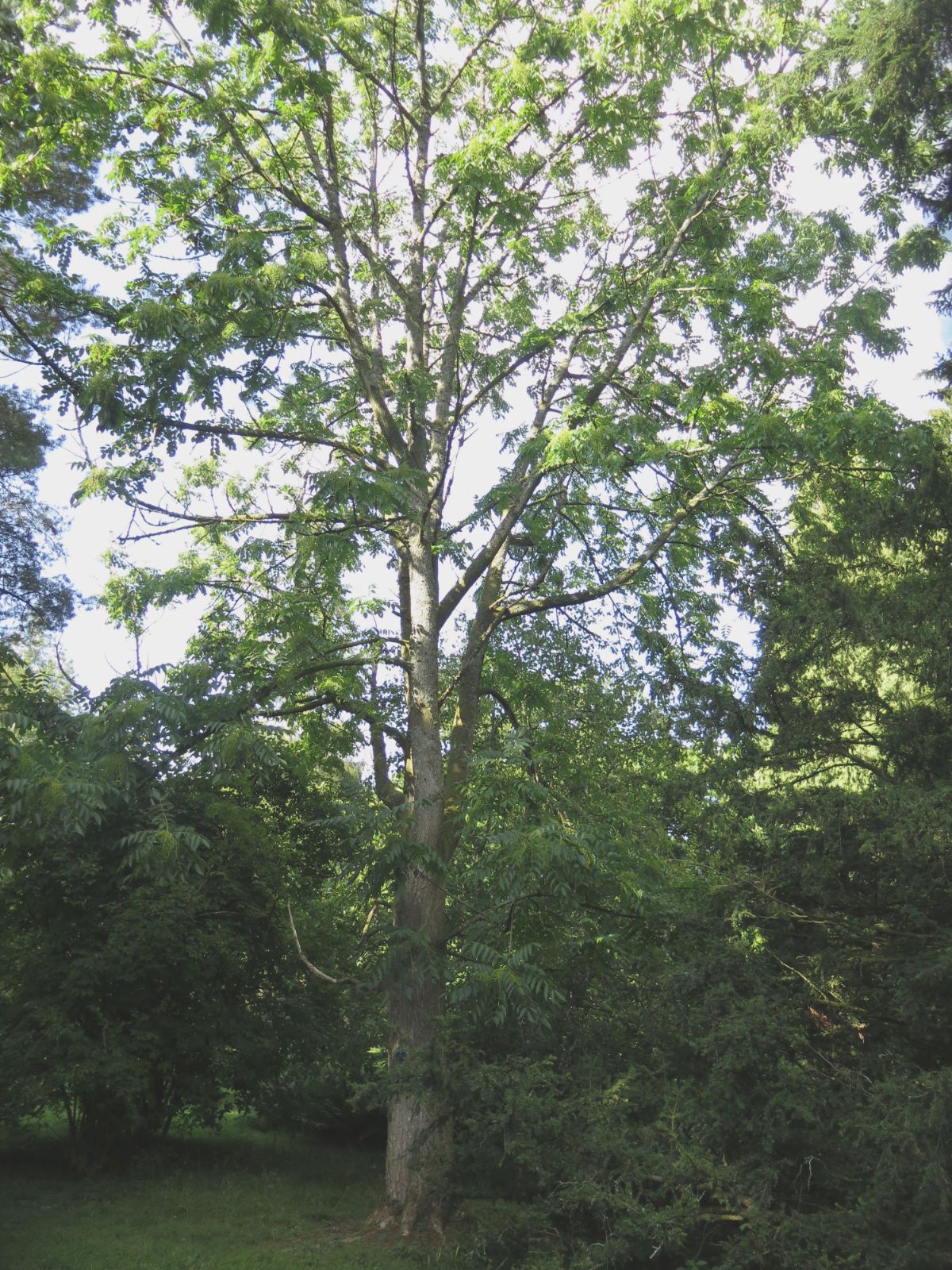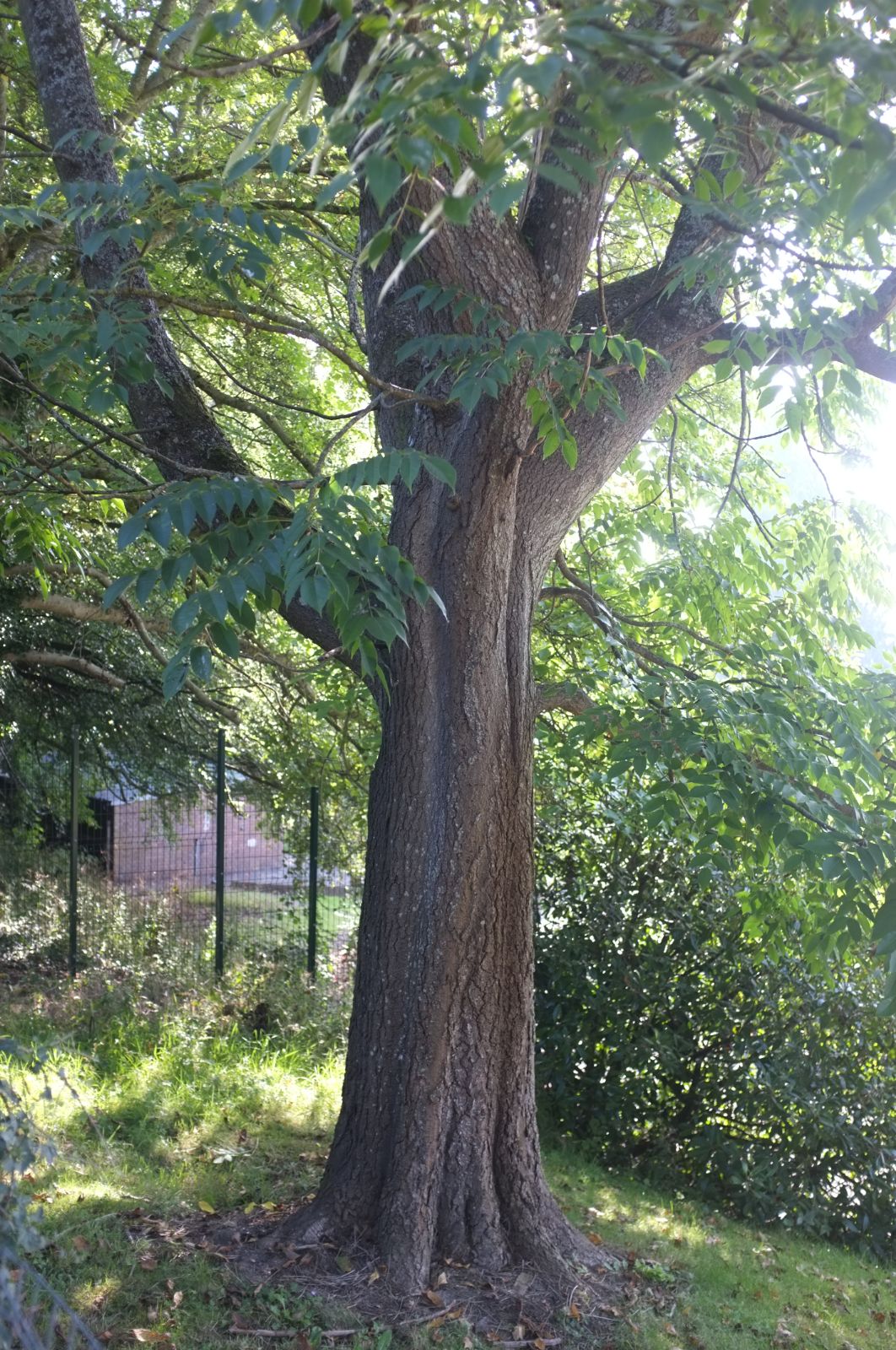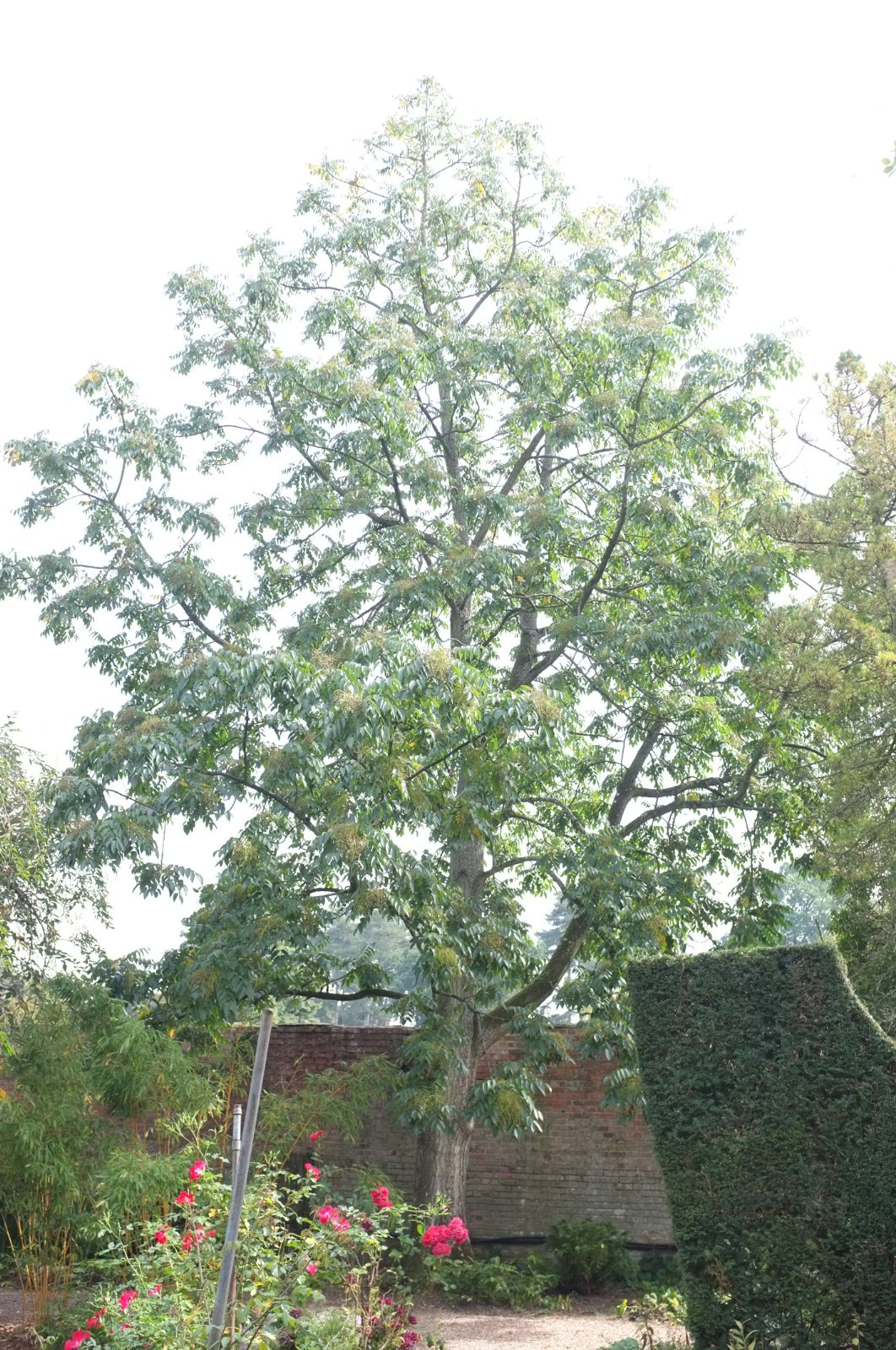Rhus verniciflua
Credits
Article from Bean's Trees and Shrubs Hardy in the British Isles
Recommended citation
'Rhus verniciflua' from the website Trees and Shrubs Online (treesandshrubsonline.
A deciduous tree up to 60 ft high in China, of erect, slender habit when young. Leaves pinnate, 1 to 2 ft long, with seven to thirteen leaflets which are broadly ovate, the largest 6 or 7 in. long, half as much wide, sometimes obliquely heart-shaped at the base, shortly stalked, velvety downy beneath, especially on the sixteen to thirty veins. Flowers yellowish white, small and inconspicuous, produced during July in a cluster of lax, branching panicles from the leaf-axils near the end of the shoots, the largest panicles 10 in. long by 6 in. wide. Fruits about the size of small peas, yellowish.
A native of the Himalaya and China, but cultivated and possibly native in other parts of E. Asia and Malaysia. This is the tree which yields by incision the famous varnish or lacquer of Japan. As a tree for the garden it is desirable for its noble foliage. The fruits also are ornamental, but are not produced by all trees, since this species is partly dioecious, and in this country do not normally contain ripe seed; they are borne in long, lax panicles. An oil is expressed from the fruit in China, etc., which is used in candle-making.
Wilson collected seeds in China in 1907 from trees growing truly wild in the mountains. Plants raised from them grew faster when young than the Japanese trees which previously were the only representatives of the species in gardens, but there seems to be no difference in overall rate of growth, nor in hardiness.
R. verniciflua belongs to the Toxicodendron group and its sap can cause severe blistering.
The following examples have been recorded: Kew, pl. 1898, 35 × 41⁄2 ft (1967); pl. 1902, 50 × 4 ft (1967); pl 1908, 41 × 23⁄4 ft (1967); Wakehurst Place Sussex, 55 × 6 ft (1973); Westonbirt, Glos.,pl. 1939, 42 × 23⁄4 ft (1966); Hergest Croft, Heref., 50 × 33⁄4 ft (1961); Stanage Park, Radnor, 49 × 61⁄4 + 53⁄4 ft (1970); Edinburgh Botanic Garden,pl. 1908, from W.259, 44 × 31⁄4 ft (1970) and 34 × 33⁄4 ft (1967); University Botanic Garden, Cambridge, 53 × 51⁄4 ft (1969); National Botanic Garden, Glasnevin, Eire, 50 × 41⁄4 ft (1966).
From the Supplement (Vol. V)
specimens: Wakehurst Place, Sussex, 59 × 61⁄2 ft (1981); Borde Hill, Sussex, 52 × 63⁄4 ft (1979); Westonbirt, Glos., the tree mentioned no longer exists but there is one at Westonbirt House, 70 × 71⁄4 ft (1982); Hergest Croft, Heref., 59 × 43⁄4 + 4 ft (1978); Witham Hall, Lines., 42 × 81⁄2 ft at 3 ft (1983); University Botanic Garden, Cambridge, from Wilson 259, pl. 1908, 44 × 31⁄4 ft (1970); Stanage Park, Powys, 52 × 61⁄2 + 61⁄4 ft (1978); National Botanic Garden, Glasnevin, Eire, 52 × 41⁄2 ft (1974); Abbeyleix, Co. Laois, Eire, 70 × 43⁄4 ft (1985).

